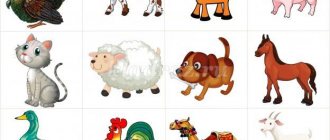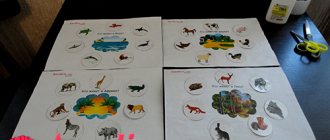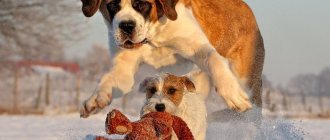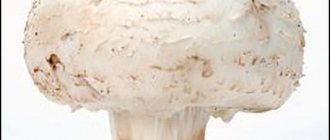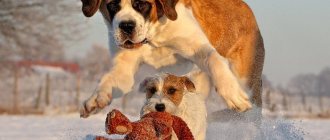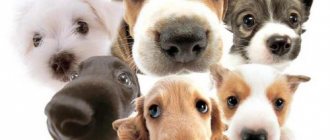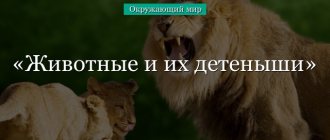Conversation on the topic “Pets” in the senior group
Summary of a conversation about pets in the senior group of a kindergarten with a presentation
Compiled by: Vitskova Marina Viktorovna, teacher of the MBDOU "Kindergarten "Golden Fish" of the Astrakhan region, Chernoyarsk district. This material will be useful for educators when conducting thematic conversations about pets with children of senior preschool age. Goals: to expand and enrich children's ideas about pets. Educational objectives: To form in children basic ideas about pets (cat, dog, cow, goat, sheep, horse, pig)
;
teach to listen carefully to the teacher, answer questions Developmental: develop the imagination, curiosity, memory and thinking of children; increase children's speech activity; develop the ability to answer questions; Educational: cultivate a sense of care and love for your pet, a sense of responsibility for your pet; cultivate an attentive attitude towards animals and a desire to help adults in caring for them. Equipment: Laptop, wall newspaper with photographs and drawings of pets. Preliminary work: conversation about animals, looking at illustrations and photographs on the topic: “Pets,” preparing creative stories together with parents about their pets.
Progress of the conversation
Teacher. Hello children. Listen to the poem, and then you will know what we will talk about today. Poem.
Everyone in the world has friends, Furry friends.
Dogs, cats, hamsters. You can't live without friends. And I have Vaska, a cat, He is the smartest cat. When I come home. He's waiting at the gate. Educator. Guys, what is this poem about? Children. About animals. Educator. What animals? Name it? Why are they called pets? Children's answers. Educator. Can you name any other pets? What animals are near you? Children. Cow, sheep, goat, rabbit, pig, horse. (Show pictures on the screen) Educator. Well done, children. Let's talk about pets today. Educator. Pets are animals kept by humans. He provides them with shelter, food, takes care of them, and they, in turn, benefit him. Do you know what benefits do pets bring? Tell me? Children's answers. Educator. Domestic animals provide humans with: milk, meat, wool. Guys, what do you think, if you release a pet into nature, can it survive there? Children's thoughts. Educator. Pets have been living next to humans for a long time, so they cannot do without his help. They have forgotten how to get their own food, build housing and defend themselves from enemies, as other animals can do. What are their names? Children. They are called wild animals. Educator. That's right, well done! How is the life of wild animals different from the life of domestic animals? Children. Wild animals take care of themselves; they live in the forest. Educator. An animal does not always bring any benefit, but a person loves and cares for it. Children, tell me, what pets do you have? Tell us about your favorite animal. How do you care for them? The didactic game “Confusion” is being played. Goals: to develop auditory attention and coherent speech. Progress of the game.
The teacher invites the children to listen to the sentence and correct the mistake.
For example: The cat lives in a kennel. The cat lives in the house. The horse lives in a pigsty. The horse lives in a stable. Educator. Well done, children, so we figured out where pets live. Now guess what riddles . Riddles Even on an iron roof He walks quietly, quieter than a mouse. He goes out hunting at night and sees everything around him perfectly. Children. Cat Nose - with a round snout, And the perky tail - with a hook. Mom is a pig, dad is a pig. He is their favorite son. Children. Piglet I'll tell you: “Me-me-me! Get ready for winter! Quickly cut my wool and knit some socks for yourself!” Children. Goat I have known you for a long time, I say: “Be-be-be!” I have cool horns, legs in hoof shoes. Children. The lamb is a faithful friend to Man, I sensitively hear every sound. I have an excellent sense of smell, a keen eye and keen hearing. Children. Dog I make my way along the fence, I go out to hunt. The mice hid in holes, I watch them for a long time. Children. Cat Physical school is being held The horse is walking across the bridge in small steps... We can do this too. (Children pretend to be horses, run in one direction at a trot, then at a walk.)
Now it’s time to rest, we’re tired after all.
Eat, drink and hit the road again... We can do this too. (Everyone crouches down and shows with their movements how they pour tea, stir sugar with spoons, cut sandwiches, then drink, eat, and after that (options are possible) they begin to work again.) Educator. And now we’ll play the game: “Whose? whose? whose? whose?". Based on the picture Educator. Whose paw is this? Children. This is a cat's paw. Educator. Whose ears are these? Children. (Cat's ears)
.
Educator. Whose ear? Children. (Dog ear) Summary of the conversation. Educator. Guys, what animals did we talk about today? How does a person care for them? What should you do to make your pets feel good and cozy? Children's answers. Educator. Well done, you were very active and inquisitive today.
Presentation on the topic: Pets
We recommend watching:
Summary of a thematic conversation in the senior group on the topic: Friendship Sviridov's music for children. Conversation with children of the senior group Thematic conversation for children in the senior group. Electrical appliances Summary of a lesson on cognitive development in the senior group “Pets”
Similar articles:
Conversation about courage with older preschoolers
Conversation about hard work in the preparatory group
Conversation about envy with preschoolers of the preparatory group
The most important events in the history of Russia for children 5-8 years old
About Russian heroes for children 6-7 years old

